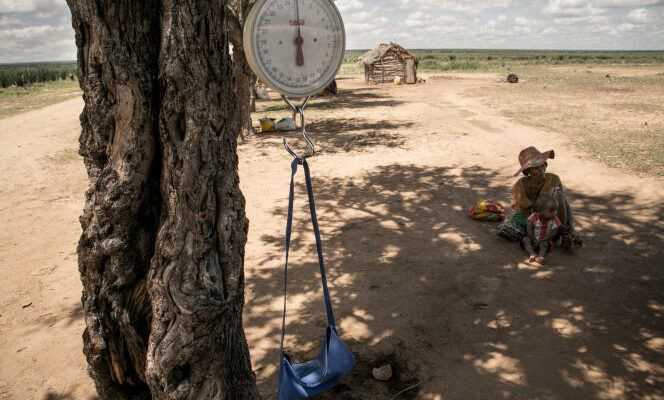To not miss any African news, subscribe to the newsletter of “World Africa” from this link. Every Saturday at 6 am, find a week of current events and debates treated by the editorial staff of “Monde Afrique”.
Just over a million people are currently in a situation of acute food insecurity in southern Madagascar. A crisis linked to the worst drought that the region has experienced in forty years. Some 14,000 people have even been officially classified in a famine situation by the UN.
For Mahatante Paubert, professor and researcher at the University of Tulear, on the southwest coast of the Big Island, the cause is the lack of water. ” It is necessary, he believes, increase the drilling of wells and desalination units along the coast, as is done in Israel and Qatar. “
How do you explain the gravity of the crisis this year?
Mahatante Paubert Several factors come into play. First, there is a demographic dimension. In the agricultural regions of the south, families are numerous. According to the Malagasy National Statistics Institute, households have an average of about six members, compared to seven in Androy.
Environmental deterioration also plays an important role. Due to deforestation, there is less evapotranspiration, less cloud formation and therefore less precipitation. The aridity only worsens from year to year and the phenomenon is aggravated by the southern trade wind which dries up everything in its path. As there is no more forest to protect crops, the wind erodes the fields and brings dust. This limits human activities and the photosynthesis of plants.
Finally, the south is in the grip of growing insecurity, which manifests itself in particular by thefts of zebus. Banditry also forces people to move and, without animals to plow, agricultural productivity drops.
Since when has the south of Madagascar been affected by this phenomenon?
Here we are talking about kéré, a word from the antandroy dialect [l’ethnie principale qui peuple cette région] which means “to be hungry”. Historically, the first recorded episode dates back to 1895 and it was documented by French settlers who arrived in the south of the island. Since then, there have been sixteen similar episodes.
It is therefore a cyclical phenomenon, but one which does not occur every year. There are times when the harvest of maize, beans and cassava are good and the whole area is not necessarily affected by famine. The kere happens when the three southern regions [Androy, Ihorombe et Anosy] at the same time suffer from lack of water and food. This is what is happening today.
Does climate change make the repetition of the kere in the years to come ?
Climate change is not the main culprit for the famine in the south. This part of Madagascar has been drying out for 3,000 to 4,000 years. Some authors even speak of desertification since the rainfall trend is negative.
Of course, the drought is amplified by the effects of climate change and practices such as slash-and-burn agriculture, deforestation … But there is also a responsibility of the political system: the lack of decentralization weighs on the capacity of the regions to cope with these conditions. problems.
Humanitarian aid can only be ad hoc. The government must absolutely dedicate a larger part of its budget to development projects. Raising funds to distribute food is not a solution: we do not make people more autonomous and more resilient.
Do we observe population movements towards the center or the north of the island?
Not really. The Antandroys have an extremely strong bond with the ancestral land. For them, it is inconceivable to abandon the graves: this is why one can see magnificent tombs next to houses made of sheet metal and straw. To leave would be to risk the curse, banishment. Migration is really a last resort.
How to fight sustainably against these famines?
First, by anticipating. In 2019, we sounded the alarm: there was not enough rain to support agricultural productivity and meet local demand. We noticed that people were starting to migrate. People were starving and stealing from each other. We have alerted to the rise of community insecurity. But in order to respond to these crises, we must tackle the drought. If we treat water deficiency, we eradicate famine. It is necessary to increase the drilling of wells and desalination units along the coast, as is done in Israel or Qatar.
Do you think the situation will improve in the years to come?
It’s possible. The current government is starting to change its approach. For example, road construction machinery has been made available to the populations. This will improve the accessibility of these areas where isolation is a real problem. The authorities have also called on private partners to solve the water problem with desalination plants. Improved seeds are increasingly used.
These initiatives are going in the right direction, but we must also allocate more money in the long term, and not only in emergency support. The state is primarily responsible for the Malagasy population.
